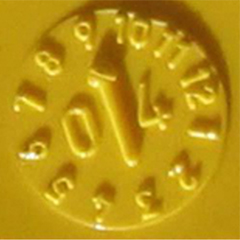

If you had me as your instructor for Level 1 – Thermographic Applications, you heard my short (I hope anyway) dissertation on electrical safety. We mention electrical safety as part of the Electrical Inspections topic in Level 1, and I say the same thing every time. Electrical safety is a topic I am very passionate about. I have been involved in electrical safety since my time in the military, and I’m a firm believer in adherence to safety standards to protect us from injury. This is a topic I can talk about for hours. In Level 1, I make sure to be brief in discussing safety offline from the course because I can ramble on and on about it.
So here I go rambling…at least for a moment or two. Many of you have arc flash rated personal protective equipment (PPE) that you wear when you inspect electrical apparatus. That PPE may consist of flame resistant (FR) rated trousers, shirts and coveralls, along with a hardhat/face shield combo. I don’t wear FR rated clothing every day because I don’t inspect every day, but some of you might. I have an inventory of FR clothing items hanging in my closet. I whip them out when I need them, don them for the day, and go on my merry way. Probably like many of you. Also, I have a hardhat/face shield combo that stays in my garage on a hook until I need it. I grab it along with my other inspection items when I need it. I have faith in my PPE to protect me – since one of the “P’s” in PPE stands for protection.
Something many of us forget to consider is how long a specific piece of PPE will protect for. I’ve seen folks put on hardhats that have safety training stickers on them from the 1980’s. Nice piece of history on your head there, Sport, but it’s probably not going to protect you as well as you think! Hardhats have a service life. After a certain time they become brittle, and will shatter rather than flex and absorb energy from an impact. Most hard hats have “molded in” dates of manufacture. Check the date codes on shells and suspensions and ensure parts have not exceeded their maximum life as specified by the manufacturer. An example looks something like this:
 3M’s suggested replacement is based on service life (based on when the hard hat was placed into service, not the manufacture date)--suspension at least every 12 months, shell at least every two to five years.
3M’s suggested replacement is based on service life (based on when the hard hat was placed into service, not the manufacture date)--suspension at least every 12 months, shell at least every two to five years.
What about flame retardant garments? How long do they last? There’s a standard for them: National Fire Protection Association Standard 2112. Depending upon how your particular garment was made and treated, it may be good for 100 wash/dry cycles (give or take). Sewn inside of every FR PPE article on the market is a care label stating how to launder the garment. Many people are unaware that fabric softener on FR rated garments is a no-no. It can in fact act as a fuel for flame!
If you’re wearing PPE like you’re supposed to be, I’m proud of you. You’re ahead of the safety game. Even in this day and age there are folks who refuse to for various reasons. Wearing it is only the first step though. Next, make sure you’re also caring for it, inspecting it for wear, and ultimately replacing it when the time comes.
Edited: December 28th, 2016